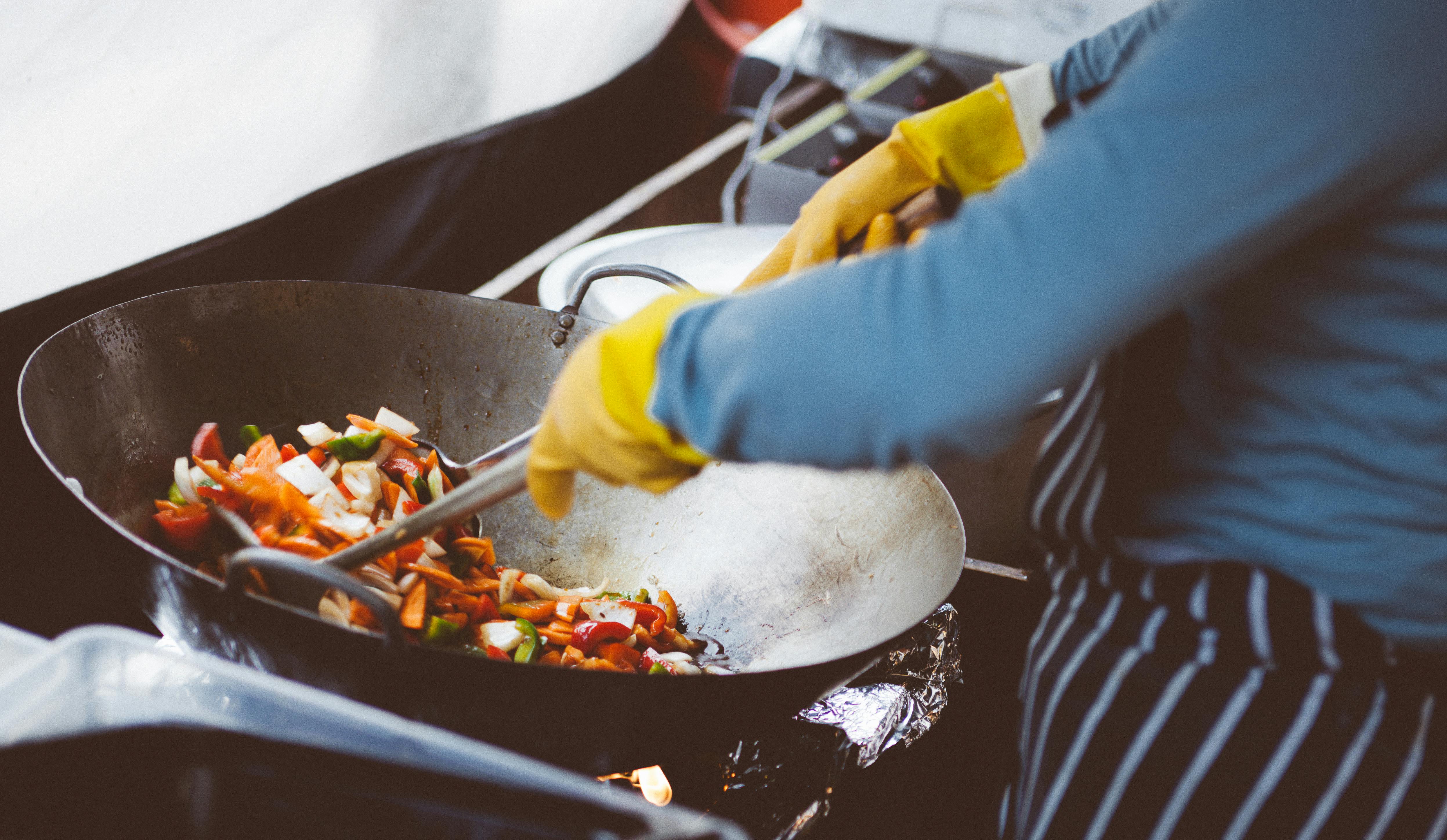Sizzling Secrets: The Art of Wok Hei Mastery
Unlock the mysteries of wok hei, the elusive "breath of the wok" that elevates stir-fries to celestial heights. This ancient Chinese cooking technique imparts a smoky essence and irresistible depth to dishes, transforming simple ingredients into culinary masterpieces. Join us as we delve into the world of wok hei and discover how to harness its power in your own kitchen.

Achieving true wok hei requires a combination of factors: a properly seasoned wok, extremely high heat, and expert timing. The wok’s curved shape allows for optimal heat distribution, while its carbon steel composition retains and conducts heat efficiently. As ingredients are tossed and turned in the searing-hot wok, they develop a subtle char and absorb the essence of previous dishes cooked in the same vessel, creating layers of flavor that build over time.
The Perfect Wok: Your Gateway to Wok Hei
Selecting the right wok is crucial for achieving wok hei. Traditional carbon steel woks are the gold standard, as they heat quickly and evenly, developing a natural non-stick patina over time. Look for a wok with a round bottom and a long handle for easy maneuvering. Avoid non-stick woks, as they can’t withstand the high temperatures necessary for wok hei.
Seasoning your wok is an essential step in preparing it for wok hei cooking. This process involves heating oil in the wok until it smokes, then wiping it clean. Repeat this process several times to create a protective layer that prevents rust and enhances flavor. With proper care and regular use, your wok will develop a rich patina that contributes to the coveted wok hei taste.
Mastering the Flame: Heat Control Techniques
The key to achieving wok hei lies in mastering heat control. Start by preheating your wok over high heat until it begins to smoke slightly. Add a small amount of oil and swirl it around the wok to coat the surface. The oil should shimmer and move freely, indicating that the wok is hot enough to begin cooking.
As you add ingredients, listen for the satisfying sizzle that signals the Maillard reaction is taking place. This chemical process creates complex flavors and aromas, contributing to the overall wok hei experience. Toss and stir ingredients constantly to prevent burning while ensuring even cooking and maximum flavor development.
The Dance of Ingredients: Timing and Technique
Achieving wok hei requires precise timing and technique. Start with aromatics like ginger, garlic, and scallions to infuse the oil with flavor. Add proteins next, allowing them to sear and develop a golden crust before pushing them up the sides of the wok. Vegetables should be added in order of cooking time, with harder vegetables going in first and leafy greens last.
The key to wok hei is constant motion. Use a circular tossing motion to keep ingredients moving and prevent sticking. This technique also allows ingredients to briefly leave the wok’s surface, exposing them to the intense heat of the flame and creating that signature smoky flavor. Practice the “wok toss” to master this essential skill and elevate your stir-frying game.
Beyond Stir-Frying: Expanding Your Wok Hei Repertoire
While stir-frying is the most common application of wok hei, this technique can be applied to other cooking methods as well. Try using your wok for high-heat searing of meats, creating smoky vegetable dishes, or even making crispy-bottomed fried rice. Experiment with different ingredients and cooking styles to fully explore the potential of wok hei in your culinary creations.
Don’t be afraid to push the boundaries of traditional wok cooking. Try incorporating wok hei techniques into fusion dishes or applying the principles to non-Asian cuisines. The possibilities are endless when you harness the power of the wok and its magical breath.
Wok Hei Wisdom: Tips and Tricks
• Use a gas stove or outdoor burner for maximum heat output
• Prep all ingredients before heating the wok to ensure swift cooking
• Avoid overcrowding the wok, which can lead to steaming instead of searing
• Invest in a quality wok spatula (wok chuan) for easy tossing and stirring
• Clean your wok immediately after use and re-season regularly
• Practice the “wok toss” technique with dried beans before attempting with real food
• Experiment with different oils to find your preferred flavor profile
• Don’t be afraid of smoke – it’s a natural part of the wok hei process
In conclusion, mastering the art of wok hei is a journey that requires patience, practice, and a willingness to embrace the heat. By understanding the principles behind this ancient technique and investing in the right tools, you can bring the authentic flavors of Chinese cuisine to your own kitchen. So fire up that wok, perfect your tossing technique, and let the breath of the wok infuse your dishes with unparalleled depth and complexity.





